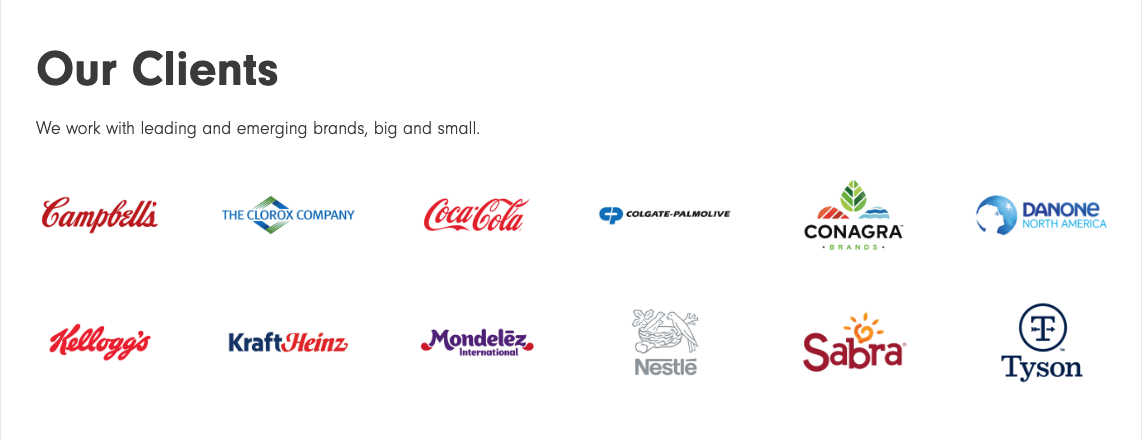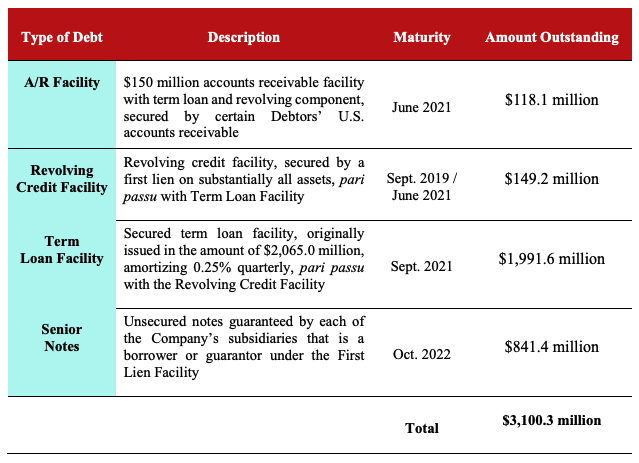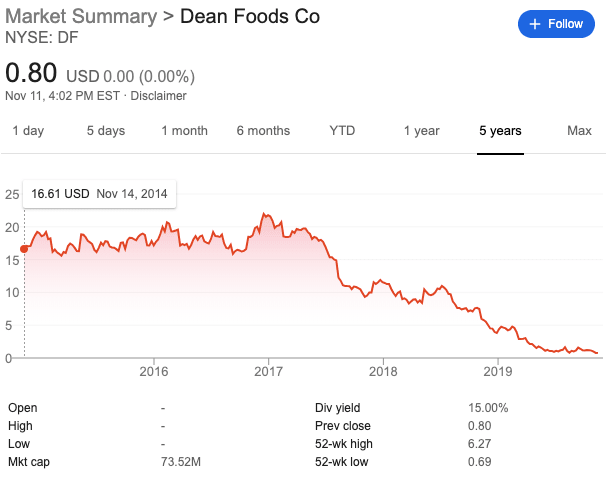🍸New Chapter 11 Bankruptcy Filing - BL Restaurants Holding LLC (Bar Louie)🍸
BL Restaurants Holding LLC
January 27, 2020
Another day, another Sun Capital Partners’ portfolio company* in bankruptcy. Texas-based BL Restaurants Holding LLC — known to most as Bar Louie — and 3 affiliated entities filed for bankruptcy in the District of Delaware. Bar Louie is a gastrobar concept that operates 110 owned locations plus 24 franchises across 26 states and the District of Columbia. In 2019, it did $252mm of sales, down 3.7% YOY.
We hate to feed into the private-equity-destroys-everything-it-touches-trope but, well, judge for yourself…
The company notes:
Over the past several years, the opening of new locations was the primary driver for sales and profit growth for the Company. This growth was partially funded through new debt, but also utilized cash flow from operations, which ultimately over time restricted liquidity otherwise needed for store refreshes and equipment maintenance and modernization, resulting in inconsistent delivery of the brand promise across the system. This inconsistent brand experience, coupled with increased competition and the general decline in customer traffic visiting traditional shopping locations and malls, resulted in less traffic at the Company’s locations proximate to shopping locations and malls and contributed to sales falling short of forecast. These customer declines were also driven by major changes in consumer behavior, including the general national trend away from casual dining. The combination of these factors had a particularly major impact on a significant segment of the Company’s footprint.
Indeed, all of that growth — coupled with disruptive trends confronting both malls and casual dining — took its toll. Indeed, 38 locations, in particular, really saddled the company. Apparently it’s a bad sign when a third of your footprint has negative same store sale comps of 10.9%. 😬 This brought down the rest of the enterprise (which “only experienced a 1.4% SSS decline.”). Only. The debtors closed the aforementioned 38 locations pre-filing.
What of the debt? The company has $87mm of funded debt, $8mm of trade debt and approximately $6mm of other unsecured debt excluding lease termination claims. Things aren’t looking so great for the trade. The pre-petition lenders have agreed to place a $22mm DIP.
So now the debtors will use that DIP to give themselves time to attempt a sale in bankruptcy. The debtors’ first lien secured lenders and the pre-petition first lien secured agent will serve as a stalking horse via a credit bid. They are owed approximately $56.4mm. Pursuant to the sale motion filed with the court, they seek a 3% breakup fee in connection with the agreement to be the stalking horse which, if you asked us, seems a bit ridiculous under the circumstances. Why do they need a breakup fee at all when they’re trying to shed this turd? Do they really want to own this business? A multi-month pre-petition marketing campaign would seem to indicate otherwise. This reeks of greed and ought to spark an objection from creditors who will be hoping there’s some buyer who comes out of the wood work and overbids for this thing.
We wouldn’t bet on it.
*The debtors’ first day declaration only refers to its private equity sponsors as “its current owners”. While it’s not entirely clear from the bankruptcy papers, it appears that Sun Capital may also be the second lien lender agent here (and lenders) — a presumption that is bolstered by the appearance of Morgan Lewis & Bockius LLP as counsel. Morgan Lewis has represented Sun Capital portfolio companies in a number of recent chapter 11 bankruptcy filings. Curious how, with one exception, there was virtually no mention of Sun Capital’s involvement in any of the papers.
Jurisdiction: D. of Delaware (Judge Walrath)
Capital Structure: $42mm Term Loan + $14.4mm RCF (Antares Capital LP), $23.6mm second lien debt (BL Restaurants Group Holding Corp.)
Professionals:
Legal: Klehr Harrison Harvey Branzburg LLP (Domenic Pacitti, Michael Yurkewicz)
Financial Advisor/CRO: Carl Marks Advisory Group LLC (Howard Meitiner)
Investment Banker: Configure Partners LLC (Vin Batra)
Claims Agent: Epiq Bankruptcy Solutions LLC (*click on the link above for free docket access)
Other Parties in Interest:
Prepetition First Lien Secured Agent and DIP Agent: Antares Capital LP
Legal: Latham & Watkins LLP (James Ktsanes, Jeremy Webb) & Young Conaway Stargatt & Taylor LLP (Michael Nestor, Andrew Magaziner)
DIP Lenders: Midcap Funding XVI Trust, Midcap Funding XXX Trust, Midcap Financial Trust, Woodmont 2017-2 Trust, Woodmont 2017-3 LP, Woodmont 2018-4 Trust
Prepetition Second Lien Agent:
Legal: Morgan Lewis & Bockius LLP (Barbara Shander)
Purchaser: BLH Acquisition Co., LLC





















